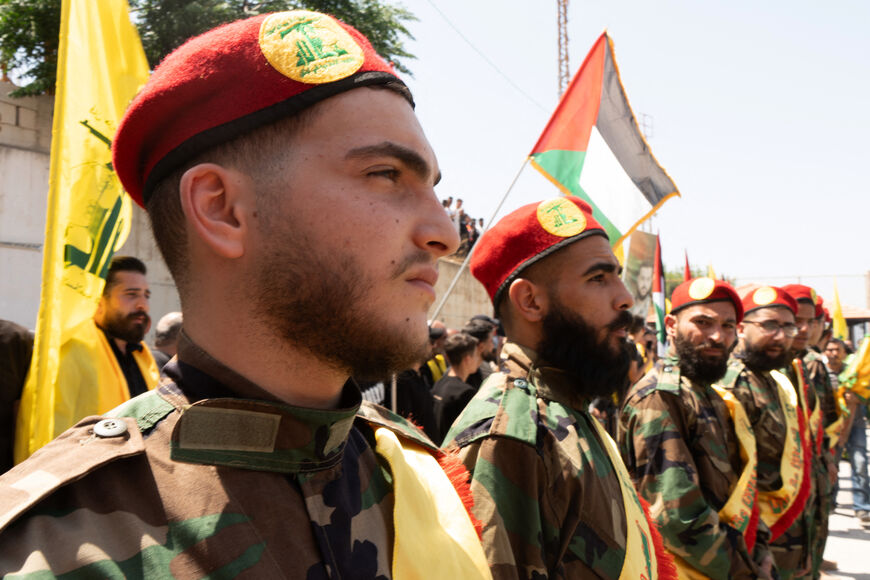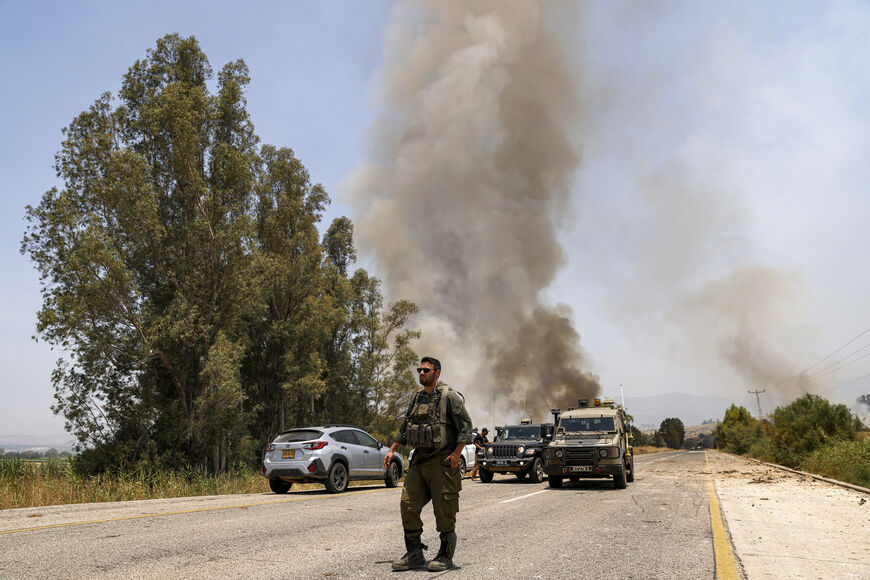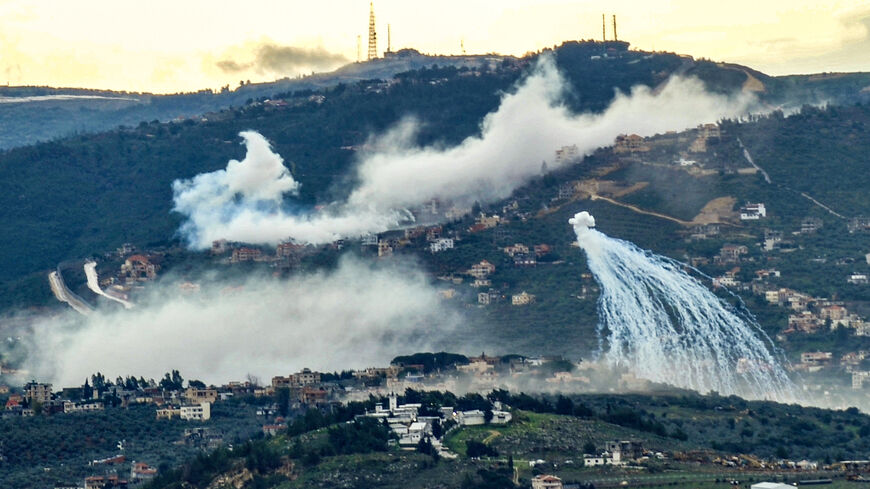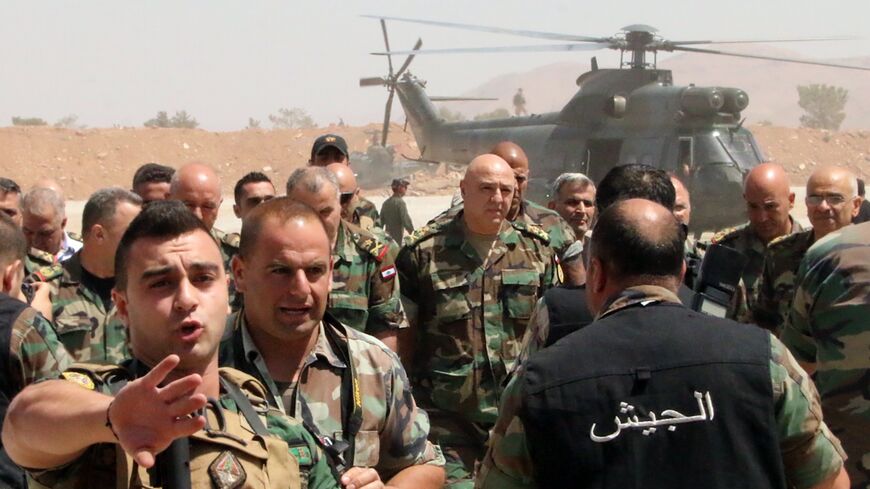As Lebanon braces, four scenarios for Hezbollah's confrontation with Israel
As US officials press their leverage to prevent an Israeli war inside Lebanon, fears of a miscalculation have grown in the last few weeks as both Hezbollah and the Israeli military intensify their clashes.
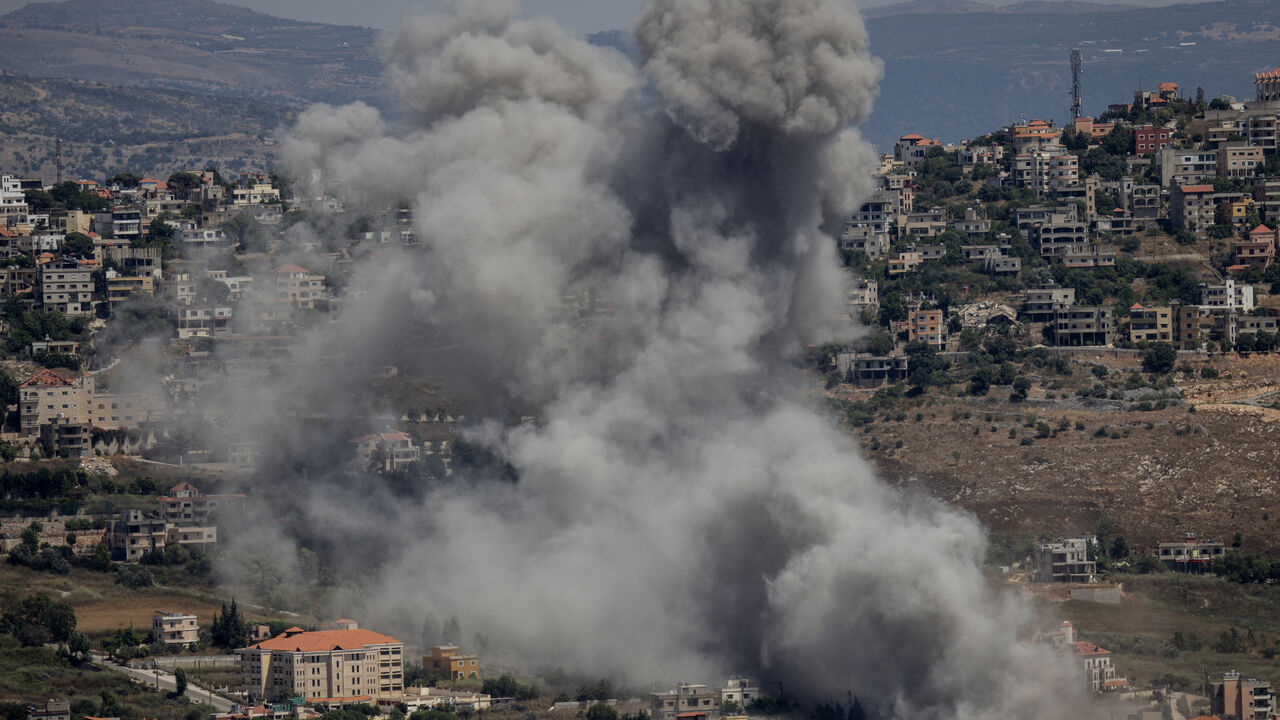
This is an excerpt from Security Briefing, Al-Monitor's weekly newsletter covering defense and conflict developments in the Middle East. To get Security Briefing in your inbox, sign up here.
WASHINGTON — With Israeli Prime Minister Benjamin Netanyahu signaling an imminent down-shift in the Gaza campaign amid preparations for a potential offensive against Hezbollah in Lebanon, Biden administration officials see a narrow opportunity to pump the brakes.
Topping their concerns is averting an all-out war between the two sides, which US officials fear could drag in other Iranian-armed militias in Iraq and Syria and potentially even the United States and Iran itself.
Israeli Defense Minister Yoav Gallant received a red-carpet welcome in Washington this week as the White House seeks to win over some of the more sober strategists remaining in Netanyahu’s government.
“Another war between Israel and Hezbollah could easily become a regional war, with terrible consequences for the Middle East,” US defense chief Lloyd Austin said in unusually pointed remarks at the top of his meeting with Gallant on Tuesday. “Diplomacy is by far the best way to prevent more escalation."
Hezbollah has now launched more rockets and drones into Israel during the ongoing Gaza war than Hamas has. The tit-for-tat strikes over the border are preventing at least 80,000 Israelis and at least 90,000 Lebanese citizens from returning to their homes.
US officials have grown increasingly worried that Israeli leaders' strategic concerns and rhetorical brinkmanship on both sides could make confrontation inevitable.
President Joe Biden’s top energy envoy, Amos Hochstein, returned last week from his fourth trip to Beirut in the last nine months, part of an effort in parallel with French diplomats seeking to negotiate an off-ramp to avert disaster.
It’s not clear whether Hochstein’s latest visit achieved any concrete gains. In a fiery speech last Thursday, Hezbollah leader Hassan Nasrallah once again ruled out halting the cross-border strikes until a permanent cease-fire in Gaza is reached.
“We're urgently seeking a diplomatic agreement that restores lasting calm to Israel's northern border and enables civilians to return safely to their homes on both sides,” Austin said with Gallant at the Pentagon this week.
The Israeli defense chief made no promises, at least publicly. “We are working closely together to achieve an agreement but we must also discuss readiness on every possible scenario,” he responded to Austin in remarks before the cameras on Tuesday.
Israeli leaders have been threatening for months to launch a military operation into Lebanon to push Hezbollah’s forces back from the border. However the tone of those threats appears to have softened amid the flurry of engagements in Washington.
“If there will not be an arrangement through diplomatic means, everyone understands that there must be an arrangement through other means. For now, we prefer to focus on the diplomatic campaign,” Israeli national security adviser Tzachi Hanegbi said on Tuesday morning, just days after meeting with US national security adviser Jake Sullivan and other top White House officials.
Sources close to the discussions say the deference – and the several weeks which the IDF is expected to need in order to prepare for an offensive in the north – may offer a window of opportunity for Western diplomats, including Hochstein, to set in motion proposals that would enable both Hezbollah and the Israeli military to halt their strikes and pull back from the border.
Having previously banked hopes on a Gaza ceasefire to reduce tensions on the Lebanon border, Biden administration officials now suggest they are trying to de-escalate the crisis with or without a deal.
"The logic of Nasrallah … is that it is all tied to Gaza, and until there is a cease-fire in Gaza the firing at Israel won’t stop,” a senior US official told reporters on Wednesday. "We frankly completely reject this logic," the official added.
As the US Navy deploys with Marines to the eastern Mediterranean to prepare for potential evacuations, here are four hypothetical scenarios that could play out in the looming confrontation between Israel and Hezbollah:
Scenario 1: Limited campaign
The Israeli military is expected to withdraw some ground forces from Gaza while shifting to precision strikes to kill senior Hamas leaders and intel-driven special operations raids in an attempt to rescue more hostages.
Israeli leaders, intent on killing Yahya Sinwar and other architects of the Oct. 7 terror attacks, may refuse to compromise on Hamas' demands for a cease-fire deal that would end the war. But lacking actionable intelligence, the pursuit through the rubble could drag on over several months.
Nasrallah, having vowed to only halt Hezbollah’s cross-border strikes following an enduring cease-fire in Gaza, could continue to refuse US-brokered negotiations. While Hezbollah may reduce the intensity and frequency of the barrages into Israel, it may not halt them.
Israeli officials have repeatedly made clear that the situation along the border is unacceptable, and Israeli citizens are unlikely to return to their towns in the north as long as the attacks continue, whatever their pace or intensity.
The Israeli air force may launch a blitz of airstrikes across southern Lebanon, largely avoiding population centers in a campaign aimed at destroying Hezbollah’s drone and rocket units within close range of the border. The militant group is almost certain to respond in kind, though Hezbollah may avoid striking major Israeli urban centers if Israel refrains from doing the same in Lebanon.
But it's not likely that Israeli airstrikes will drive Hezbollah's elite Radwan forces back from the border without a ground incursion. In a rare public warning earlier this week, US Chairman of the Joint Chiefs of Staff CQ Brown said that such an assault would increase the risk of an Iranian military intervention on the side of Hezbollah.
Scenario 2: Miscalculation
As major Israeli ground operations in Gaza wind down, IDF special forces will continue the search for hostages and hunt for top Hamas commanders.
In Israel’s north, the tit-for-tat with Hezbollah may slow but not stop. An errant strike on one side of the border could hit a bus or a private residence, killing a large number of civilians and setting off a spiral of retaliation that both sides struggle to contain. Western officials including Hochstein have expressed fears of just such an incident.
As mutual strikes intensify, casualties are likely to mount on both sides. Israeli leaders may decide to put an end to the conflict before Hezbollah targets major Israeli cities such as Haifa with precision-guided munitions.
Kata'ib al-Sayyid al-Shuhada in Iraq has already threatened to side with Hezbollah if war breaks out, while other Iranian-armed groups in Syria and Yemen could launch their own salvoes of drones and missiles.
While the United States could rally allies to help defend Israel against those aerial attacks, the collective air defense effort isn't likely to easily repeat its successes in the April 13 Iranian attack against Israel, Gen. Brown, the Pentagon's top-ranking officer said this week. Many of Hezbollah’s short-range rockets would be difficult for US F-16s and F/A-18s to effectively parry when fired en masse.
As Al-Monitor reported last year, US officials fear Hezbollah's arsenal could overwhelm Israel’s Iron Dome batteries, leaving significant casualties and damage across the country’s north. If Iran's Islamic Revolutionary Guard Corps intervenes directly with its own ballistic missiles and drones, the Biden administration may face the decision of whether to push the US intervention beyond the defensive.
Some 3,400 US troops in Iraq and Syria, as well as thousands more American service members at air and naval bases in Arab countries in the Gulf, lie within range of Iran’s projectiles.
Scenario 3: Pre-emptive war
US officials say neither Israel's nor Hezbollah's leaders want war, but Netanyahu's government is under intense domestic pressure to enable the safe return of Israeli citizens to their communities in the north.
Israeli leaders could decide to risk a full-blown campaign against Hezbollah, targeting thousands of sites in southern Lebanon in the first 24 hours in a bid to cripple the Iran-backed faction’s unprecedented strategic arsenal.
Airstrikes may reach as far as Beirut, targeting Hezbollah command and control in a bid to end the war quickly and prevent the militant group from striking at sensitive Israeli electrical and water infrastructure, airports, naval facilities and air defenses.
“We can bring Lebanon completely into the dark, and take apart Hezbollah’s power in days,” Israeli opposition leader and former defense minister Benny Gantz warned at a conference in Herzliya earlier this week. Gantz acknowledged the cost of the war to Israel “will be heavy.”
“We need to be ready for major incidents of harm,” he was quoted as saying. “We should try to avoid it. But if we need to do it, we cannot be deterred.”
Israel could also target top Hezbollah leaders including Nasrallah and his deputy, Naim Qassem.
IDF armored columns and infantry may push into southern Lebanon in an attempt to destroy Hezbollah’s forces near the border and force them to withdraw. Such a campaign is likely to inflict significant casualties on both sides and decimate southern Lebanon, prolonging the country's already dire economic turmoil. And experts say there is no guarantee of success.
Iran – and thus the United States – would be more likely to intervene militarily.
Scenario 4: Cease-fire and de-escalation
Hopes that Israel and Hamas could come to a quick agreement for a cease-fire in Gaza have faded since Biden announced the most recent proposal on May 31, but such a deal would likely ease diplomatic efforts to avert a looming Israel-Hezbollah war.
Analysts say Netanyahu needs a victory in Gaza to prevent the collapse of his governing coalition. If Israeli forces were to kill Sinwar or other top Hamas leaders in Gaza and perhaps rescue additional hostages with the help of US-provided intelligence, it could give the prime minister breathing room to compromise on the cease-fire proposal.
“The closer they get to Hamas' leadership, the more likely cease-fire negotiations will start again in earnest,” Michael Mulroy, a former top Pentagon Middle East policy official during the Trump administration, told Security Briefing.
However unlikely in the near-term, a cease-fire could allow Nasrallah to claim credit for leading the so-called Islamic Resistance in ending the war in Gaza. With that, the Lebanese militant group may diminish its strikes into Israel, especially if Israel does the same.
That could give traction to parallel US and French-led negotiations, setting off a labyrinthine diplomatic process that Western officials hope would eventually result in Hezbollah withdrawing its fighters some 6-8 miles from the border while Israel pulls back from 13 disputed points.
Yet analysts say most Hezbollah fighters near the Blue Line are from villages in the south, and while they may drop their militia fatigues and abandon their fortified positions, they are unlikely to leave their homes.
“There are Hezbollah weapons caches all throughout the south. They will continue to be there,” said Firas Maksad of the Middle East Institute.
In such a scenario, the Lebanese militant faction is likely to retain its formidable arsenal, ready for use in the next Israel-Lebanon war — or to deter Israel and the United States from launching long-range strikes to destroy Iran’s underground nuclear facilities.

